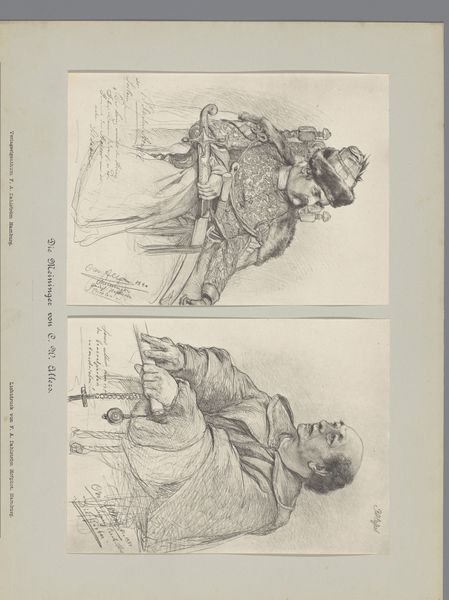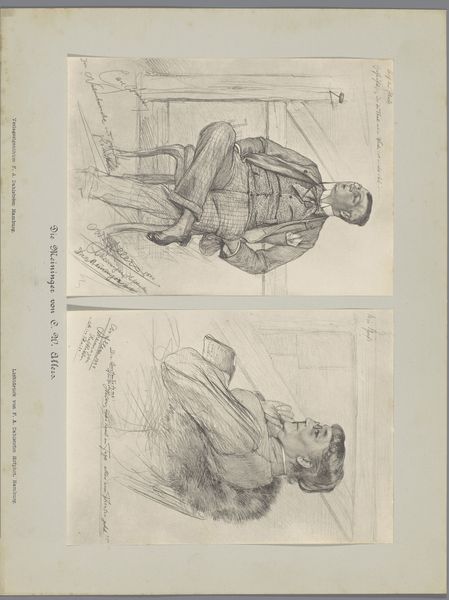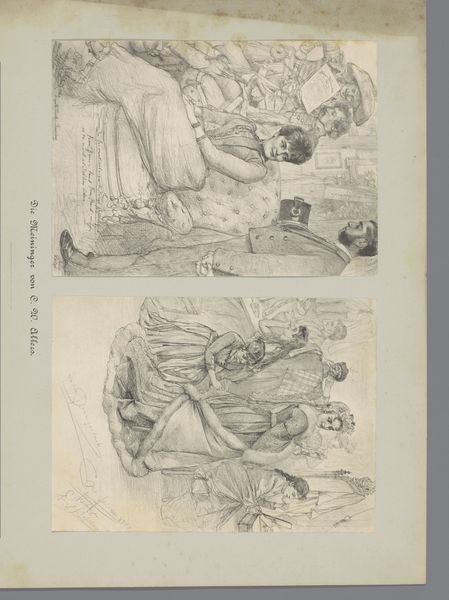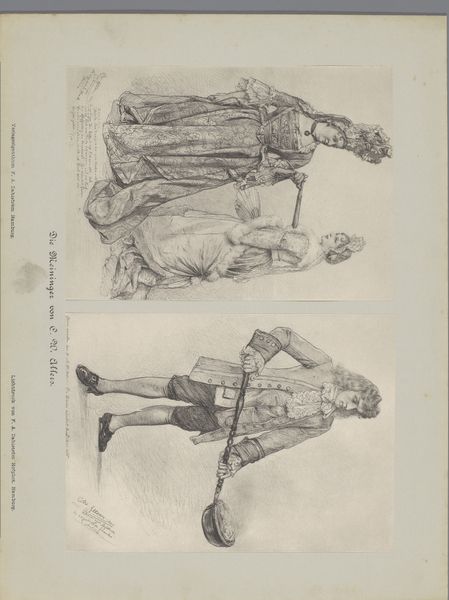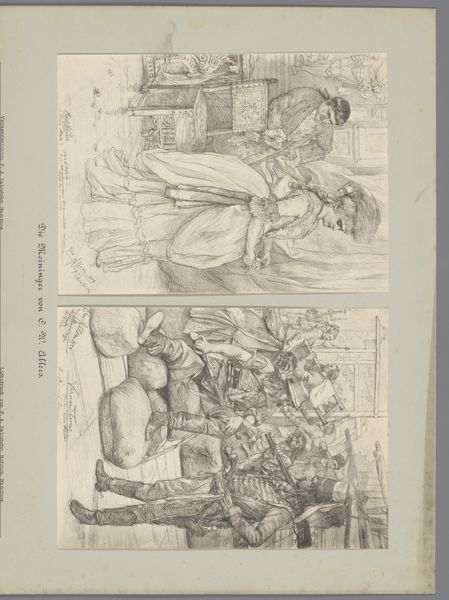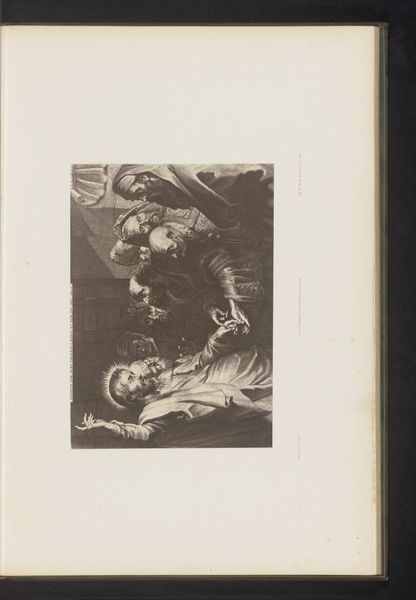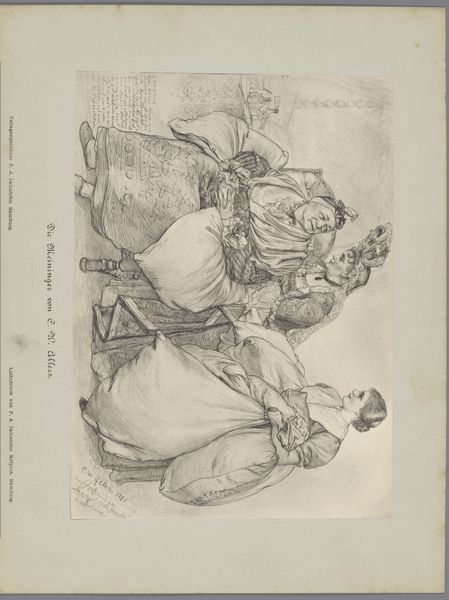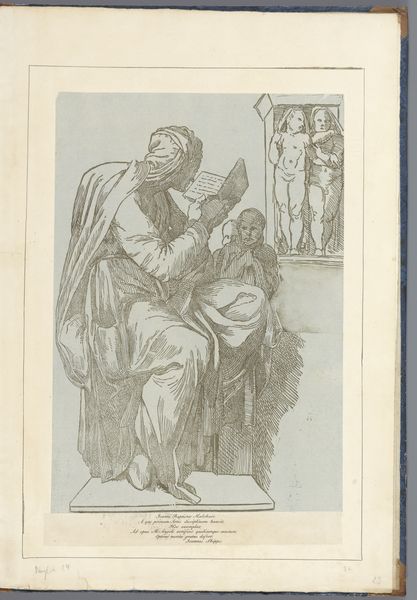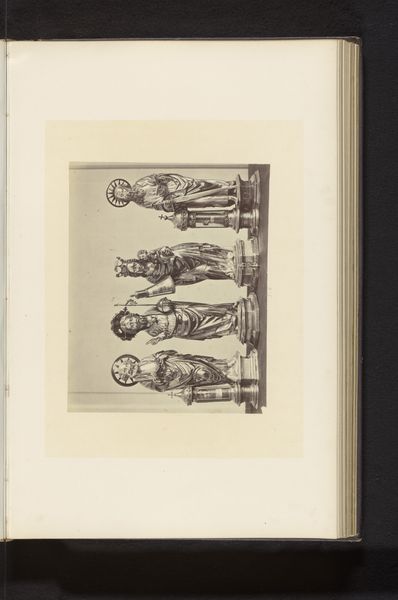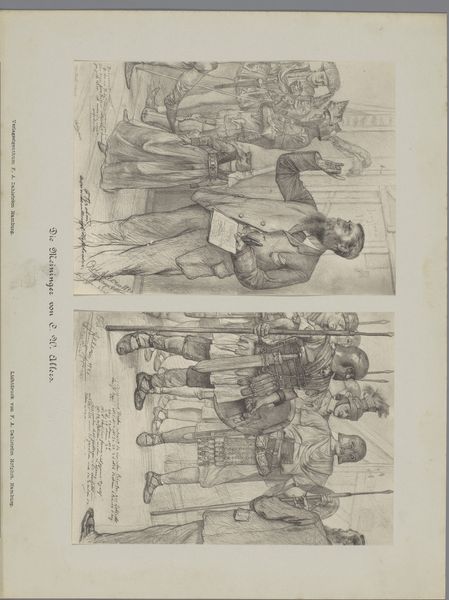
Twee fotoreproducties van tekeningen, voorstellende vier acteurs in historische kostuums 1890
0:00
0:00
drawing, pencil
#
portrait
#
drawing
#
pencil
#
history-painting
#
academic-art
Dimensions: height 237 mm, width 317 mm
Copyright: Rijks Museum: Open Domain
Editor: This work features two photographic reproductions of drawings, each depicting actors in period costumes. They’re by F.A. Dahlström from 1890 and executed in pencil. I’m struck by the stark contrast between the active, almost theatrical poses, and the stillness inherent in a pencil drawing. What stands out to you in this piece? Curator: Considering these are photographic reproductions, we have to think about layers of production. Pencil, drawing, photography, print: each material dictates a certain kind of labor. It's not just Dahlström’s hand, but the photographer and printer too. Editor: That's interesting. So, it’s not just about the artist's intent, but about the whole network of people involved? Curator: Exactly. The “original” drawing, assuming it still exists, has a completely different context than these reproduced images. Think about the role these images played, perhaps as promotional material. Who was meant to consume them? How would this relate to our modern notions of copyright? Editor: That really shifts my perspective. I initially saw them as historical artworks. Now, I see the photographic reproductions also as commodities, products of a specific system. Are you suggesting the drawings may have been created with the intention of reproducing them? Curator: Possibly, yes! We need to look at the full picture. Who was this artist and what were the systems available at the time that produced these images? These reproductions speak volumes about how art, theatre, and commerce intertwined in the late 19th century. The artist's signature becomes just one component of this larger, interconnected process. Editor: I never would have thought about it that way. This makes me wonder about how artistic value is assigned and who is left out of art history because they’re considered laborers. Curator: Precisely. Let’s remember that. The "author" may be less significant than how labor is materialized here.
Comments
No comments
Be the first to comment and join the conversation on the ultimate creative platform.
